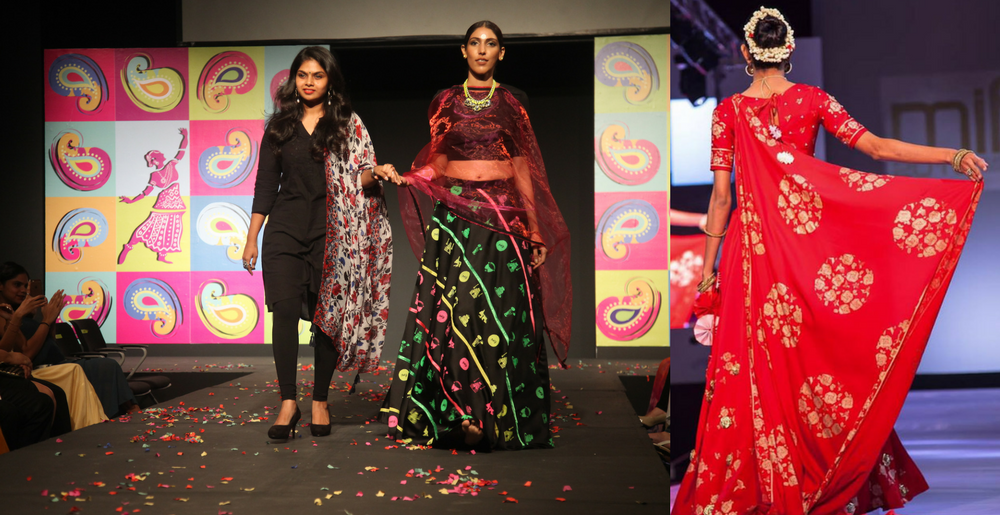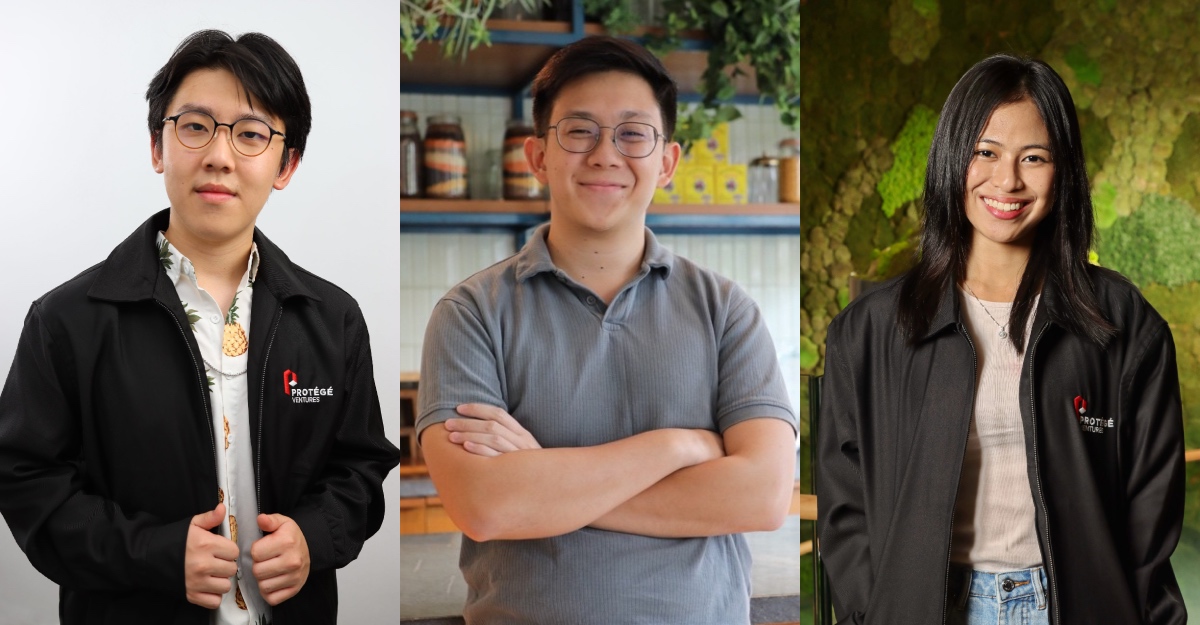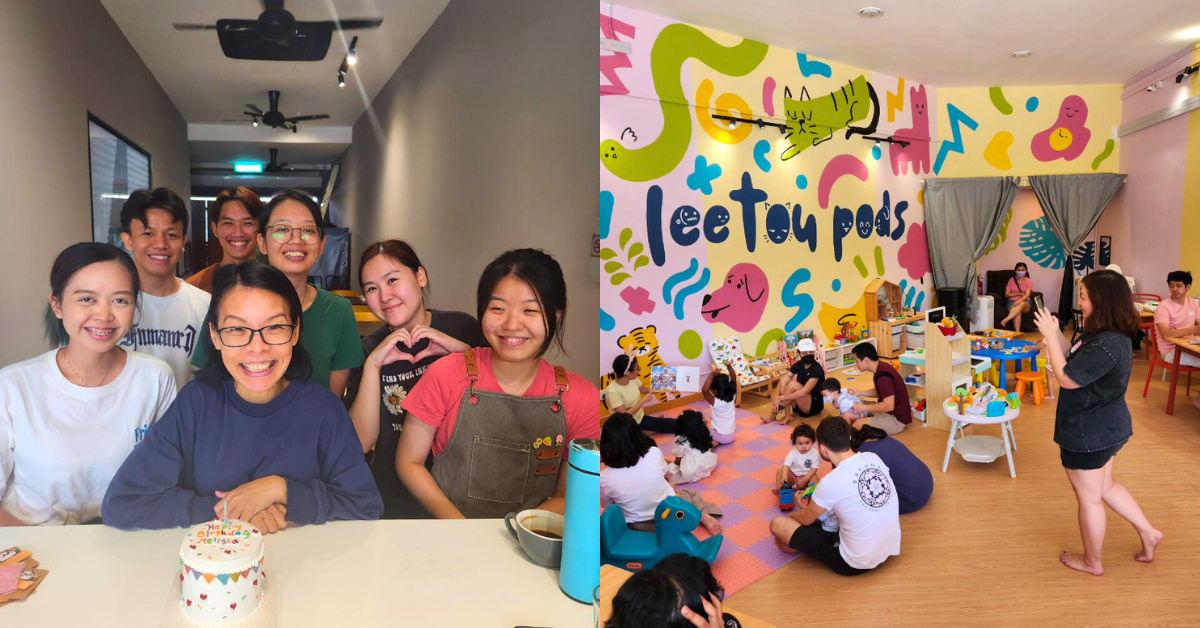Mora Laree is home-based design studio by 27-year-old Jeevitha Manimoly. She designs the prints and works on the concept of each piece with a different pattern in mind for each.
The name “Mora Laree” comes from syllables that make up the names of her family members, as a integral representation of their support for her.
She devised her first saree at age 19; it was a red chiffon saree, with handsewn pearls and gold borders. However, there was less focus on this aspect of her life as she made her way into college and then to a job at a interior design firm in KL.
The inception of Mora Laree was quite unexpected, even for her.
She quit her job due to personal reasons and her passion for design found an outlet to take form.
Even so, she understood that designing sarees and starting a brand were two very different things; thus she took the time to learn the fundamentals that came with her new venture.
Besides her immediate family, her aunt Chandra Kottayan has played an essential role to the brand ever since the early beginnings, as she passed down almost 50 years of knowledge and experience of a seamstress to her niece.
“My brand ideology #wemakewhatwelove derives from the idea of being timeless from the mainstream and possesses a natural flair and taste for the uncanny that conforms to no trends.”
She officially launched her first collection, INORI in October 2016, at the the Malaysia India Fashion Festival.
“INORI, an ethical collection tying together both ‘IN’dian silhoutte with ‘ORI’gami inspired patterns was handdrawn and handprinted using eco-friendly water-based inks on cotton fabrics.”

As one person drawing, designing, and working on the artwork for each individual piece, Jeevitha works very closely with her seamstresses to make the sample pieces for each collection and outsources tailors when needed.
She takes pride in being “just an inch offbeat” from the straight road.
Mora Laree designs their own textile patterns which can be customised to suit the tastes of customers.
Aside from customisation, they do their part to ensure their fashion line remains ethical. Most of their printing is done locally and in limited quantities to reduce wastage.
“We try to be hands-on with every production stage to make sure we know what we are making and who is involved and where we source from.”
“Our products are designed, hand-drawn and screen-printed by hand. We try to handcraft as many elements as possible for our designs. The tassels and buttons are also handmade at times.”
“We pay our tailors based on the market rate for each garment. We do not make any profit from their work because if we do it will become very pricey, or we will have to negotiate with their pay. We also work with housewives who work from home and have increased their wages as they were charging below the market rate.”

Starting off with a capital of RM10,000 from personal savings, they have managed to rake a profit of about RM6,000 so far.
As Jeevitha works very lean, she sees the revenue as an monthly achievement, particularly since they lacked manpower and resources in the beginning.
“We believe our most significant milestone was when we gained recognition for our print and people were aware of the name of each collection.”
“When we had our booth in Publika recently, many people came by to congratulate us on our launch and offered us their support.”
As a testament to their success in being recognised as a Indian fashion brand, they even have a subline for fashion jewelleries called “PARO” which has handpicked and customised jewellery. They have both contemporary and ethnic pieces that can go with any attire, modern or traditional.
They just launched their newest collection, “#madras”, at the Indian Fashion Agora (IFA 2017) with a pop-indian theme that is inspired by the culture and tradition of Chennai, India.

“With our second collection, we have sourced 100% cotton and handprinted our fabric from India. We also work with weavers in India to source our handloom cotton or silk sarees for printing.”
As a fashion brand that gets most of its customers online, Jeevitha acknowledges that it is a competitive industry that is getting harder to thrive in.
“What sets us apart is our prints and that we can customise the prints for our customers as well.”
“Regardless of the theme or concept we work on, it has become a ritual at Mora Laree to incorporate at least two saree designs in each of our collection as it encapsulates our whole ideology of being timeless and that is where we started this journey from.”
Editor’s Note: In an earlier version of this article, one of the images used was credited inaccurately. We have made an update to correct that.
Feature Image Credit: Suthan Kiran









